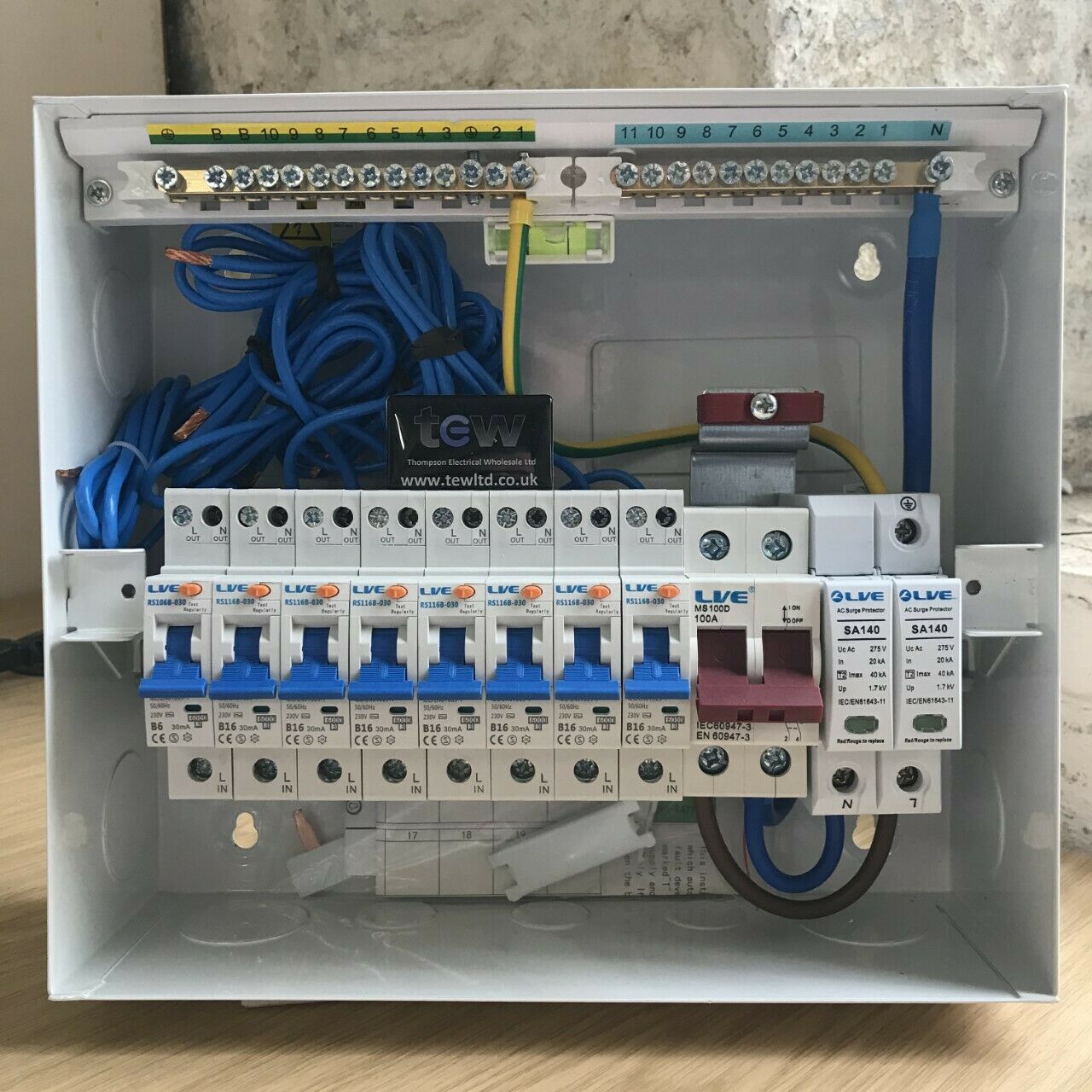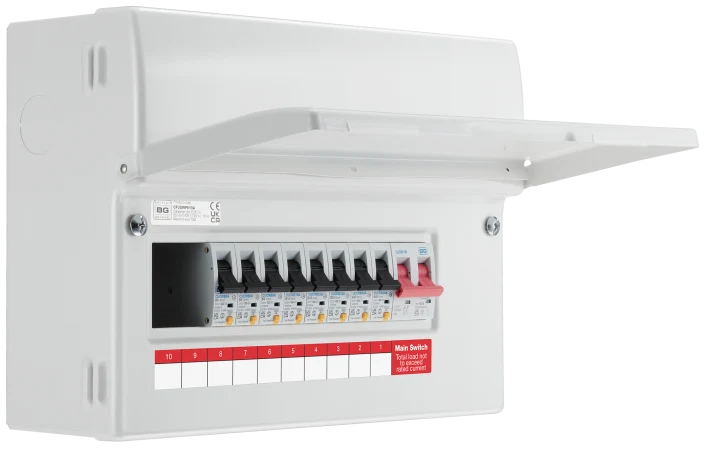How RCBO CONSUMER UNITS Improve Electrical Safety in Residential Spaces
How RCBO CONSUMER UNITS Improve Electrical Safety in Residential Spaces
Blog Article
The Role of Consumer Systems in Effective Power Administration Solution
Customer devices are important to effective energy administration systems, acting as the key distribution points for electric power within structures. By integrating breaker, they protect circuits from prospective overloads, thus maintaining safety and security and stopping comprehensive outages. The development of smart modern technologies has actually even more improved their performance, enabling real-time information surveillance and nuanced energy usage analysis. This assimilation not just enhances energy use yet also facilitates the unification of renewable resource sources, thereby promoting lasting techniques. Just how, after that, do these innovations equate to substantial advantages in daily power administration?
Understanding Consumer Units

Recognizing the role of consumer units starts with acknowledging their important function in protecting electric systems. By isolating faults within specific circuits, consumer devices stop widespread interruptions and prospective fire hazards. This isolation is achieved via the usage of circuit breakers that trip or integrates that strike when a mistake is identified, thus cutting off the electrical circulation to the affected circuit.
Additionally, customer systems facilitate the orderly distribution of power, boosting the performance of energy usage. They enable the organized management of electric lots, which can be particularly crucial in commercial and industrial setups where need can change considerably. Properly kept consumer devices contribute to the long life of electric systems and assist in lessening downtime triggered by electrical failures, ultimately sustaining the seamless procedure of energy-dependent facilities.
Smart Technologies Assimilation

A crucial advantage of clever customer units is their ability to take advantage of advanced formulas and equipment knowing for anticipating analytics. This enables preemptive changes based upon usage patterns, weather prediction, and other variables, substantially raising total efficiency. Moreover, clever customer devices help with demand response programs, where power use can be dynamically adjusted throughout top periods to support the grid and minimize prices.
The assimilation of renewable resource resources, such as solar and wind, is additionally streamlined via clever customer devices. By intelligently handling the intermittency of these resources, these devices guarantee a trusted and balanced energy supply. Additionally, clever consumer devices boost individual involvement by supplying thorough insights and remote abilities via mobile applications, promoting a more aggressive approach to power conservation and sustainability.
Monitoring Energy Consumption
Building on the capabilities of wise innovations integration, monitoring energy usage becomes a critical focus within energy administration systems. Reliable monitoring acts as the structure for recognizing power ineffectiveness and carrying out restorative steps. By leveraging sophisticated metering framework (AMI), real-time data on power usage can be gathered at granular degrees, giving beneficial understandings right into look at here usage patterns and peak demand periods. This data-centric technique allows both customers and energy supervisors to make enlightened choices targeted at lowering waste and improving overall performance.
Smart meters and Web of Things (IoT) devices play an essential role in this surveillance process. These tools can track energy use in real-time, sending data to central systems for evaluation. The collected data is after that refined through innovative formulas to identify abnormalities, anticipate future usage, and recommend optimization methods. Additionally, cloud-based services supply scalable platforms for saving and assessing huge datasets, assisting in remote surveillance and control.
The assimilation of these modern technologies not only empowers consumers with in-depth information concerning their power use but also supports utility carriers in handling lots distribution better. Inevitably, continuous and exact tracking is important for accomplishing energy effectiveness, price savings, and sustainability objectives within energy management systems.
Optimizing Device Use

One effective method entails determining height and off-peak hours to move energy-intensive activities, such as washing or dishwashing, to times when energy need is lower. This not only decreases stress on the grid yet also maximizes lower power tariffs. Additionally, integrating device discovering formulas enables anticipating upkeep, ensuring home appliances run at optimum efficiency and lengthening their life expectancy.
Energy monitoring systems can likewise integrate user-specific preferences and behaviors to tailor appliance usage timetables. As an example, wise lights systems can adjust brightness based on tenancy and all-natural light schedule, while HVAC systems can keep comfort levels without excessive power use.
Promoting Sustainability
Promoting sustainability within energy management systems entails not only improving effectiveness but also fostering ecologically liable practices. Consumer units are essential to this process, as they give real-time information and control devices that make it possible for individuals to check and minimize their energy consumption. By leveraging innovative innovations, consumer systems can determine energy-saving chances and promote the integration of renewable energy sources like solar and wind power.
One critical element of promoting sustainability is informing customers on the benefits of responsible energy usage. Through detailed insights offered by consumer devices, users can make enlightened choices that decrease their carbon footprint. For example, these systems can recommend ideal times for operating high-energy home appliances based on grid demand and renewable resource accessibility, therefore here are the findings lowering reliance on fossil gas.
Additionally, consumer devices sustain the adoption of smart grid technologies, which improve the general efficiency and integrity of power circulation. By enabling two-way communication in between customers and energy carriers, these systems can dynamically get used to power needs, decreasing waste and promoting using sustainable energy techniques.
Conclusion
Customer units, as important parts of energy monitoring systems, considerably improve electrical safety and effectiveness within buildings via circuit defense and Visit This Link wise technology assimilation. Additionally, the incorporation of renewable energy resources promotes sustainable practices, adding to reduced general energy consumption and lower carbon impacts.
Advancements in wise modern technologies have revolutionized the capacities of energy monitoring systems, particularly with the integration of clever customer devices.Structure on the capabilities of wise modern technologies integration, checking energy usage becomes an important emphasis within energy management systems.Effective device usage optimization is a crucial part of power monitoring systems, aiming to enhance efficiency and decrease unnecessary energy intake.Customer systems, as important parts of energy management systems, significantly improve electric safety and effectiveness within buildings via circuit defense and smart modern technology integration. In addition, the consolidation of renewable power sources promotes sustainable practices, contributing to reduced general energy usage and reduced carbon footprints.
Report this page